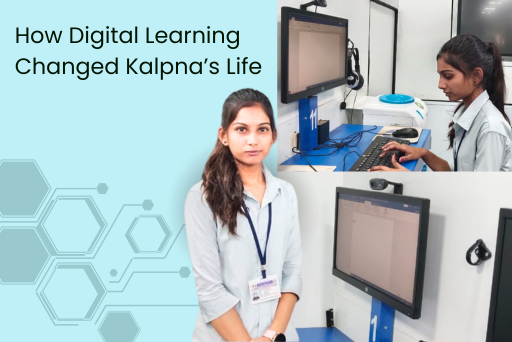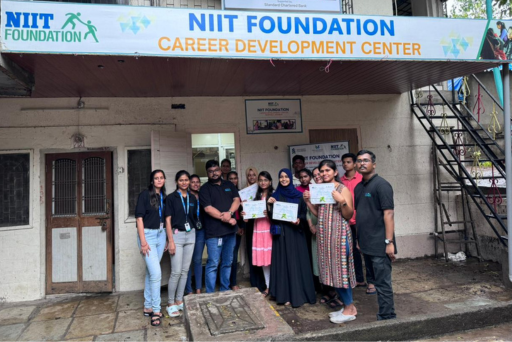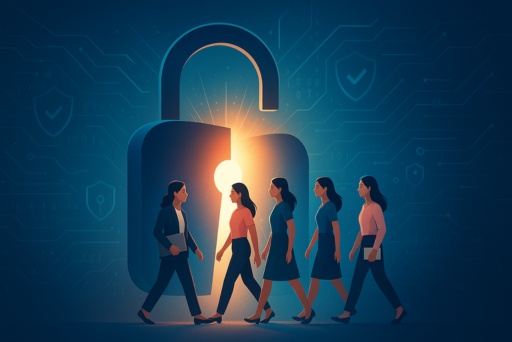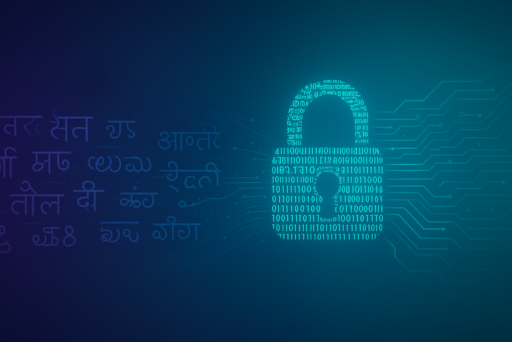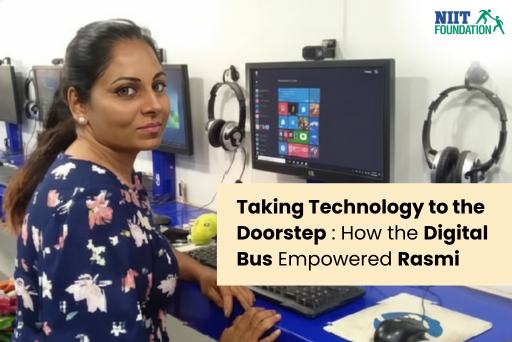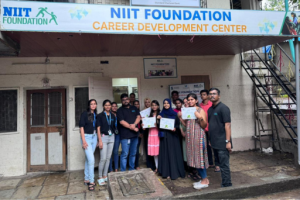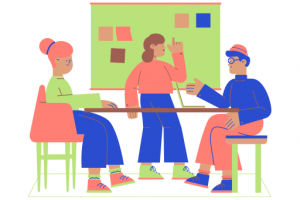In the quiet village of Gharani, where fields stretch wide and the pace of life is slow, Kalpna grew up far removed from the digital world. Her days followed the rhythms of rural life and her father’s work in agriculture. Computers, to her, were distant and unreachable — a part of a world she never imagined she’d step into.
“I had never even touched a computer,” she once told us.
But everything began to change the day our Digital Transformation Van (DTV) reached her college as part of NIIT Foundation’s digital inclusion initiative. Kalpna entered the mobile classroom with curiosity — and a quiet fear. She didn’t know if she’d be able to keep up. But she came anyway.
And that first step made all the difference.
Learning, One Click at a Time
The initial sessions weren’t easy. Learning to use a mouse, typing on a keyboard, or even opening a document felt like enormous tasks. But Kalpna’s determination stood out. What she lacked in experience, she made up for with grit.
Then, slowly, things started to shift.
We still remember the day she completed her first PowerPoint presentation — complete with slides, transitions, and formatting. Her eyes lit up with a smile we won’t forget. From that point on, she tackled Word, Excel, internet browsing, online banking, and e-governance modules with growing confidence.
She began to understand how digital tools could be used not just for learning, but for living — in small, everyday ways that unlock bigger possibilities.
From Learner to Leader
Kalpna didn’t stop at learning. When a cleanliness campaign was conducted at her college as part of the program, she volunteered and participated with heart. She became an active part of the classroom community, always ready to support others.
What inspired us the most, though, was what she said at the end of the training:
“I want to help other girls like me. I want them to see that they can learn this too.”
Kalpna’s journey is more than a story of digital literacy. It’s a story of transformation — from hesitation to empowerment, from doubt to leadership.
Why Stories Like Kalpna’s Matter
At NIIT Foundation, we believe that digital education isn’t just about technology. It’s about opening doors to confidence, agency, and opportunity. Behind every student we teach is a story like Kalpna’s — quiet yet powerful.
Every session we conduct, every module we deliver, is aimed at unlocking the kind of self-belief that changes lives. And while we may only walk a short part of each learner’s journey, we carry their stories with us as reminders of why this work matters.
Transformation doesn’t always begin with ambition. Sometimes, it begins with courage.
Kalpna had that courage. And we are honoured to have been a part of her journey.

